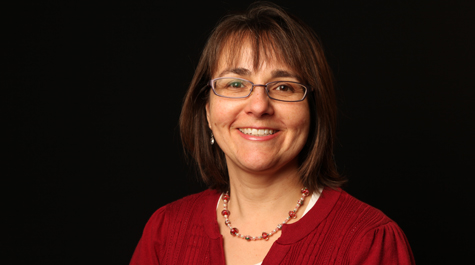Lisa Landino studies the chemistry behind what she calls “the big three” neurodegenerative diseases: Parkinson’s, amyotrophic lateral sclerosis and Alzheimer’s.
Landino’s work has drawn federal support for more than a decade. Recently the William & Mary professor of chemistry received $415,000 from the National Institutes of Health (NIH). She investigates the constant attack, destruction and repair of the body’s molecules by the free radicals that are a natural product of respiration.
“We breathe oxygen, so we can’t get away from oxygen radicals. We can’t get away from oxidative stress,” Landino says. She focuses her research on oxidative damage to tubulin, a protein that acts as both scaffolding and as what she describes as a “railroad track” that facilitates intracellular transfer of other molecules. Landino believes that unrepaired damage of tubulin in nerve synapses is a major factor in neurodegenerative disease.
“A synapse is where two neurons come together and communicate with each other,” Landino explained. “Tubulin is part of the neuronal structure and when the proteins won’t function properly in neurons, then people can get Alzheimer’s.”
She explained that the tubulin only functions when it’s assembled in a polymer structure. However, free radicals break tubulin down into a loose constituent form known as a dimer. Like many cellular components, tubulin can repair itself—most of the time.
Her recent grant came from the National Institute of Neurological Disorder and Stroke. Landino has received a total of $861,591 from the NIH since 1999 for her work on oxidative damage to proteins. Over the years she has had around 50 undergraduate students work in her lab, many of them co-authors on the 10 papers published in peer reviewed journals.
Landino points out that involvement of undergraduates in her lab was partly responsible for securing the recent grant.
“For this R-15 program it definitely helps to have undergraduates in the program,” she said. “One of the goals of the program is expose undergraduate students to research. They really want to see how you’re training students. At William & Mary, one of the things we’re best known for is training our undergraduate scientists who go on to graduate school and then get Ph.D.s ”
















